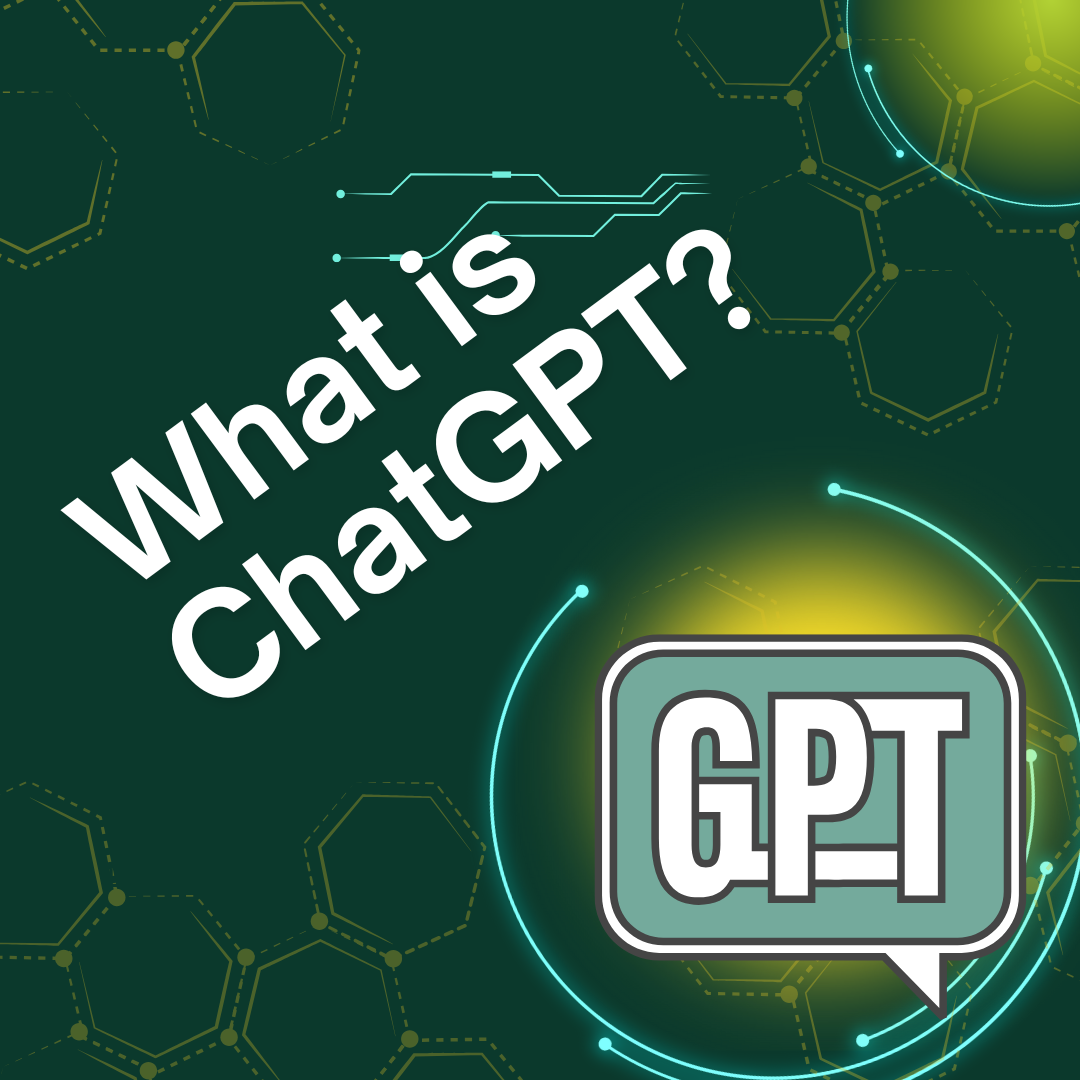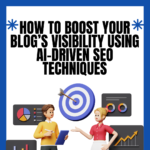ChatGPT, is a powerful AI tool created by OpenAI , has taken the tech world by storm since its official launch on November 30, 2022. In just one week, it gained 1 million users, and within two months, that number goes up to 100 million. Today, over 300 million people interact with this revolutionary AI each week, making it one of the fastest-growing technologies ever. But what exactly is ChatGPT, and how can you make use of it for content marketing and other business needs? In this article, we’ll break down what ChatGPT is, how it works, and its potential applications and limitations, helping you understand how to make the most of this powerful tool.
1.What is ChatGPT?
ChatGPT is a powerful AI language model developed by OpenAI, built on their GPT (Generative Pre-trained Transformers) framework. It is designed to process and generate natural language text, enabling it to understand context, nuances, and communication patterns. The GPT family started with GPT-1, followed by improvements in GPT-2, GPT-3, and the most recent GPT-4, with each version enhancing the model’s ability to generate more coherent and contextually accurate text. ChatGPT leverages these advancements, offering users a highly capable tool that can handle a variety of tasks, from answering questions to providing detailed explanations and even helping with code development.
What sets ChatGPT apart is its ability to generate human-like text. Whether you’re looking for trivia answers, drafting essays, or debugging programming code, ChatGPT’s conversational format allows it to offer relevant responses that resemble how a human would interact. This functionality comes from a combination of supervised learning and reinforcement learning techniques, trained on vast amounts of data from the internet and conversations with human trainers. As a result, its grammar, structure, and tone mimic natural human dialogue, making it an invaluable assistant for both business and personal applications.

Since its launch on November 30, 2022, ChatGPT has captured widespread attention for its impressive capabilities. Within just one week of its release, it amassed 1 million users, and by two months, this number had grown to 100 million. By 2024, ChatGPT’s user base had expanded even further, with over 300 million active weekly users, cementing its place as one of the fastest-growing technologies in the AI space. Despite its rapid growth and widespread adoption, ChatGPT does have its limitations, which we will explore later. Nonetheless, its potential applications in content generation, customer service, and business optimization make it a game-changing tool in the realm of artificial intelligence.
2.How does it work?
ChatGPT is powered by an advanced language model called GPT, which stands for Generative Pre-trained Transformer. This sophisticated AI model is designed to process and generate text that mirrors human conversation, making it an invaluable tool for a wide range of applications, from casual chats to complex business tasks. The technology behind GPT was developed to understand context and predict the next words in a sequence, enabling ChatGPT to generate coherent, contextually relevant responses to user queries.
The core functionality of ChatGPT lies in its training process. Initially, it was trained on vast amounts of data sourced from books, websites, and other publicly available text. This training helped ChatGPT learn the rules of grammar, sentence structure, and nuances in human language, which it now uses to provide natural and engaging conversations. However, the learning process doesn’t stop there. OpenAI continues to refine ChatGPT through ongoing feedback and fine-tuning. Human trainers play a crucial role in evaluating and improving the quality of its responses by ranking them and providing additional feedback.
The transformer architecture that powers ChatGPT allows it to recognize patterns in the data it processes. This enables it to predict the most likely words or phrases that should come next in a conversation, ensuring the AI generates responses that are not only accurate but also fluid and natural. As a result, ChatGPT can handle a variety of tasks, including answering questions, offering suggestions, writing content, and even solving problems.
Despite its impressive capabilities, ChatGPT is continuously evolving. As users interact with the tool, their feedback helps OpenAI fine-tune its accuracy, reduce errors, and make it even more responsive to real-world queries. The upvote and downvote system that allows users to provide direct feedback on the quality of responses is a key feature in ensuring that ChatGPT continues to improve over time.
While ChatGPT is highly capable in many areas, it’s important to recognize its limitations. It may struggle with more complex topics that require specialized knowledge or deep understanding beyond its training data. It can also occasionally produce responses that are inaccurate or biased, underscoring the need for users to critically assess the information it provides. Nonetheless, the sheer versatility and potential of ChatGPT make it a powerful tool for businesses, content creators, and everyday users looking to leverage the power of AI for a wide range of tasks.
3. The Technology Behind ChatGPT
ChatGPT’s impressive capabilities are powered by advanced technology that leverages deep learning, neural networks, and vast datasets. At the core of this technology is the training data and the fine-tuning processes that enable ChatGPT to understand, generate, and refine human-like text. To fully grasp the capabilities of ChatGPT, it’s important to break down how this technology works.
ChatGPT is based on a deep learning model known as a Generative Pre-trained Transformer (GPT), which is designed to process and generate natural language. The “transformer” architecture used by GPT allows the model to analyze large volumes of text data and recognize patterns within the text. This enables the model to predict the next word or phrase in a sequence, generating coherent and contextually accurate responses. The transformer model, developed by Vaswani et al. in 2017, is a major breakthrough in the field of AI because of its ability to process data in parallel rather than sequentially, allowing for faster training and more sophisticated predictions.
Training Data and Fine-Tuning Processes
The process of training ChatGPT starts with feeding the model vast amounts of text data. This data is sourced from publicly available books, websites, and other written content. The model learns the structure of human language, including grammar, sentence structure, context, and even common idiomatic expressions. Through this training, ChatGPT becomes proficient at generating text that sounds natural and accurate.
However, raw training data alone isn’t enough to create a truly effective AI model. This is where the fine-tuning process comes in. After the initial training phase, human trainers provide additional feedback by reviewing the model’s responses and making adjustments to improve its accuracy and relevance. These trainers often rank responses based on their quality and coherence, ensuring that ChatGPT learns to provide better answers over time. This iterative process allows ChatGPT to refine its responses and handle a wide range of topics, from simple queries to complex explanations.
Neural Networks and Deep Learning
The core technology behind ChatGPT is based on neural networks, which are designed to mimic the way the human brain processes information. Neural networks consist of interconnected layers of nodes (neurons), with each layer performing specific computations on the input data. In the case of ChatGPT, these networks process text data and generate predictions about what text should come next in a sequence. This process of learning from data is known as deep learning.
Deep learning is a subset of machine learning that focuses on using multi-layered neural networks to process vast amounts of data and make increasingly accurate predictions. With every layer in the network, the model learns to recognize more abstract patterns in the data. This enables ChatGPT to handle complex language tasks, from answering factual questions to generating creative text, all while maintaining coherence and context.
The Evolution of GPT Models: GPT-3 vs. GPT-4
ChatGPT is based on the GPT-3 and GPT-4 models, which represent the latest advancements in the GPT series. The progression from GPT-1 to GPT-4 has been marked by significant improvements in performance, context understanding, and text generation.
GPT-3: Launched in 2020, GPT-3 was a major leap forward in AI language modeling. With 175 billion parameters (the weights used by the neural network to make predictions), GPT-3 was capable of generating highly coherent and contextually relevant text. It quickly gained attention for its ability to produce text that was almost indistinguishable from human writing, which made it a game-changer in fields like content creation, customer service, and more.
GPT-4: GPT-4, released in 2023, is even more advanced than its predecessor. It boasts even more parameters (rumored to be trillions), making it more capable of handling highly complex language tasks with better contextual understanding. GPT-4 also excels in areas like summarizing long texts, answering nuanced questions, and even generating creative content. It is significantly better at understanding and responding to ambiguous or highly specific queries, offering improved accuracy and consistency in its responses.
The difference between GPT-3 and GPT-4 lies not only in the size and complexity of the models but also in the fine-tuning and training methodologies. While GPT-3 was already a formidable tool, GPT-4 pushes the boundaries of what’s possible, providing more reliable, creative, and context-aware text generation.
As these models continue to evolve, ChatGPT benefits from the cutting-edge advancements in natural language processing, neural networks, and deep learning. This ensures that the AI behind ChatGPT remains one of the most powerful tools available for conversational AI, content generation, and a wide range of business applications.
4. Applications of ChatGPT in Content Creation and Online Business
ChatGPT has revolutionized content creation and online business by offering powerful tools that enhance productivity, creativity, and efficiency. Its ability to generate human-like text, combined with its understanding of context and keyword optimization, makes it an indispensable tool for content creators and businesses focused on digital marketing and SEO.
Content Idea Generation and Topic Research
One of the primary challenges faced by content creators is coming up with fresh, engaging ideas. ChatGPT is highly effective at brainstorming content topics based on the latest trends, audience preferences, and industry insights. Whether you’re looking for blog post ideas, video concepts, or social media content, ChatGPT can quickly suggest a range of topics that resonate with your target audience. It helps alleviate the creative burden, allowing creators to focus more on refining their ideas rather than searching for inspiration.
Moreover, ChatGPT excels at topic research. After generating content ideas, it can provide detailed information, facts, and insights on specific topics, saving time spent on manual research. With its vast knowledge base, ChatGPT can gather data, summarize articles, and offer new perspectives on any subject matter, making it an ideal tool for both beginners and experienced content creators.
Prompt Engineering for Specific Results
ChatGPT’s ability to generate high-quality content depends on how well you craft your prompts. This is where prompt engineering becomes crucial. By providing clear, specific, and detailed prompts, users can guide ChatGPT to produce the exact type of content they need. Whether you’re asking for a formal blog post, casual social media copy, or technical articles, the quality of the output can be significantly improved by fine-tuning the input prompt.
For example, instead of asking “Write a blog post,” you could ask, “Write a 1,000-word SEO-optimized blog post about the importance of keyword research in 2024, including a case study on recent trends in digital marketing.” This specific prompt ensures that ChatGPT generates focused, valuable content tailored to your requirements, which is key to achieving your content goals.
Keyword Research and SEO Optimization
For content creators focused on SEO, ChatGPT is a highly efficient tool for keyword research. The AI can suggest relevant keywords, identify long-tail keywords with high search volume, and help integrate them naturally into your content. By asking ChatGPT to perform a keyword audit or analyze your content for SEO optimization, you can improve your chances of ranking higher in search engine results.
ChatGPT can also help with generating meta descriptions, SEO-friendly titles, and alt-text for images, all essential components for improving on-page SEO. By consistently using ChatGPT for these tasks, you can create content that is not only high-quality but also optimized for search engines, driving organic traffic to your site.
SEO Strategies and Content Structuring
In addition to keyword research, ChatGPT can assist with SEO strategies and content structuring. By asking ChatGPT for recommendations on how to structure blog posts or articles for better readability and SEO performance, users can ensure their content meets both user and search engine needs. For example, ChatGPT can suggest including headings, subheadings, and bullet points to improve content readability, which is an important factor in SEO.
ChatGPT can also guide users on how to create internal links and suggest related topics that can be included in blog posts to enhance engagement and link equity. This feature is particularly useful for building a comprehensive content strategy that ensures your blog or website ranks for multiple keywords and topics.
Social Media and Marketing Content
Beyond traditional blog posts and articles, ChatGPT has a powerful role in social media content creation. It can help create catchy headlines, engaging captions, and compelling calls to action, all of which are crucial for driving engagement on platforms like Instagram, Twitter, and LinkedIn. ChatGPT’s ability to mimic human-like language and tone enables it to produce content that resonates with your audience, whether you’re sharing promotional messages, news updates, or thought leadership pieces.
Additionally, ChatGPT can assist in email marketing campaigns by writing personalized email copy that aligns with your business objectives. It can generate subject lines that are optimized for high open rates, craft persuasive email content, and even automate follow-up emails based on user behavior, making your email marketing strategy more efficient and effective.
Enhancing Efficiency in Content Production
ChatGPT significantly improves the efficiency of content production. It can help writers generate initial drafts in seconds, allowing them to focus on refining and editing. Instead of spending hours starting from scratch, content creators can use ChatGPT to get the ball rolling and ensure a constant flow of content ideas and materials. This is especially beneficial for businesses that need to produce a high volume of content regularly, such as e-commerce stores, digital agencies, and content marketing firms.
Moreover, ChatGPT can assist in repurposing content. For example, it can convert blog posts into social media posts, create summaries for newsletters, or transform articles into video scripts. This versatility allows content creators to extend the reach of their original content and engage with their audience across different platforms.
ChatGPT’s capabilities in content creation go beyond simply generating text. From brainstorming ideas to optimizing SEO, assisting with prompt engineering, and structuring content effectively, it is an indispensable tool for content creators and online businesses. By integrating ChatGPT into your workflow, you can significantly enhance productivity, improve the quality of your content, and achieve better SEO results, all while saving time and effort. Whether you’re crafting blog posts, marketing copy, or social media content, ChatGPT offers the tools necessary to elevate your content strategy and grow your online presence.
5. Limitations and Ethical Considerations
While ChatGPT has proven to be an incredibly powerful and versatile tool, it is not without its limitations and ethical considerations. These challenges range from biases inherent in the model’s training data to concerns surrounding privacy and responsible AI usage. Understanding these limitations and addressing ethical considerations is crucial for users to navigate ChatGPT’s capabilities responsibly and effectively.
Common Challenges: Bias, Misinformation, and Limitations in Understanding
One of the most significant challenges with ChatGPT is the bias present in its responses. Since ChatGPT is trained on large datasets gathered from the internet, it is inevitably influenced by the biases embedded in those data sources. These biases can manifest in various ways, such as gender, racial, or cultural bias, which may result in the AI generating responses that are unintentionally skewed or unfair. For example, certain groups or perspectives may be underrepresented in the training data, leading to an imbalance in the AI’s ability to understand and respond to topics from diverse viewpoints.
Another challenge is misinformation. Although ChatGPT is trained on vast amounts of publicly available information, it does not have real-time access to current events or reliable sources, and it may inadvertently generate outdated or incorrect information. It can also struggle to differentiate between credible and unreliable sources, potentially spreading misinformation if not used carefully. This is especially concerning in fields like health, politics, or legal matters, where factual accuracy is critical. Users must remain vigilant and cross-check the information provided by the AI to ensure its reliability and correctness.
Additionally, ChatGPT has limitations in understanding. Despite its ability to generate coherent and contextually appropriate text, it does not “understand” language in the way humans do. It is a pattern recognition tool that predicts what words should come next based on the input it receives. As such, it can fail to grasp nuanced meanings, complex concepts, or emotions behind certain prompts. It also lacks common sense reasoning and can sometimes generate content that appears logically sound but is factually incorrect or nonsensical when closely examined. This limitation can result in responses that are superficially plausible but lack depth or accuracy.
Privacy Concerns and Responsible AI Usage
As with any AI technology, privacy concerns are a key issue when using ChatGPT. Since the AI interacts with users through input data, there is always the risk that personal or sensitive information could be inadvertently shared. While OpenAI has implemented safety measures to mitigate privacy risks, users should be cautious about sharing private details with the AI, especially information such as passwords, financial data, or personal identification. OpenAI emphasizes the importance of not entering sensitive personal information in interactions with ChatGPT.
Moreover, there are concerns surrounding the responsible use of AI. ChatGPT can be easily employed for malicious purposes, such as generating misleading content, spamming, or even creating harmful propaganda. The ease with which ChatGPT can produce human-like text makes it an attractive tool for individuals with ill intentions who may seek to exploit the model for unethical purposes. For instance, it could be used to write deceptive articles, manipulate public opinion, or produce harmful content like hate speech or cyberbullying messages. It is vital for both developers and users to use ChatGPT responsibly and for ethical purposes.
OpenAI has taken steps to encourage responsible usage by implementing a usage policy that forbids the generation of harmful, illegal, or malicious content. They have also put safeguards in place, such as content filtering systems, to help reduce the likelihood of the AI producing harmful responses. However, the effectiveness of these safeguards is an ongoing area of development, and the responsibility to use the technology ethically ultimately falls on the users.
Steps Taken by OpenAI to Address These Issues
To mitigate the challenges and ethical concerns associated with ChatGPT, OpenAI has implemented several strategies and safeguards. These steps are designed to reduce bias, prevent misinformation, and ensure responsible usage of the AI.
Bias Mitigation: OpenAI has taken steps to reduce bias in its models through careful selection and curation of training data. They have worked to ensure that their data includes a diverse range of perspectives and viewpoints. Additionally, OpenAI has used techniques such as reinforcement learning from human feedback (RLHF) to fine-tune the model and improve its ability to generate fairer, more balanced responses. However, eliminating bias entirely remains a challenging task, and OpenAI continues to invest in research to improve fairness and reduce biases in AI.
Fact-Checking and Misinformation Control: OpenAI has made efforts to improve the factual accuracy of ChatGPT’s responses by incorporating safety layers that attempt to flag or prevent the generation of false or misleading content. While the model does not have access to real-time information, OpenAI has worked on refining the system to be more discerning about the credibility of sources. Users are encouraged to verify the information generated by the AI, particularly when it comes to specialized or critical topics.
Privacy Protection: OpenAI has implemented privacy safeguards to protect user data. For example, user interactions with ChatGPT are typically anonymized to avoid the exposure of personally identifiable information. OpenAI’s data handling practices are designed to ensure that user privacy is respected, and they have transparent policies regarding how data is stored, used, and retained. While OpenAI has taken significant steps to safeguard privacy, users are still advised to avoid sharing sensitive personal information.
Promoting Responsible Usage: OpenAI actively promotes responsible usage of its AI systems by setting clear guidelines about acceptable and unacceptable use cases. They also encourage developers to build applications that comply with ethical standards and respect user privacy. OpenAI’s content moderation policies prohibit the use of ChatGPT for harmful, illegal, or malicious activities, and they have implemented systems to monitor and flag inappropriate content.
Despite these efforts, ethical challenges remain, and the responsibility lies with users, developers, and organizations to ensure that ChatGPT is used in ways that align with societal values and norms. OpenAI continues to work on enhancing the model’s safety, fairness, and privacy, and it encourages feedback from the community to help improve its systems.
As ChatGPT continues to evolve and become an integral tool in various industries, it is crucial to be aware of its limitations and the ethical considerations surrounding its use. While it offers remarkable capabilities for content creation, customer service, and more, its inherent biases, potential for misinformation, and privacy concerns must be managed responsibly. OpenAI’s commitment to addressing these issues through ongoing research and development is commendable, but ultimately, the responsible use of ChatGPT will depend on the actions of its users and the ethical standards upheld by the broader AI community.
6. How to Get Started with ChatGPT
Getting started with ChatGPT is relatively straightforward, and with the right approach, users can unlock its full potential. Whether you’re using it for personal projects, business applications, or content creation, understanding how to effectively access and use ChatGPT will ensure that you make the most of its capabilities. In this section, we will explore the different ways to access ChatGPT, tips for crafting effective prompts, and best practices for maximizing its potential.
Accessing ChatGPT: Platforms and Tools
To begin using ChatGPT, the first step is accessing the platform that hosts the AI. The most direct way is through OpenAI’s official platform, where users can interact with ChatGPT through the web interface. Simply visiting OpenAI’s website allows individuals to sign up for an account and start using the AI for free, though some advanced features may require a subscription to the premium plan.
Beyond the basic interface, OpenAI also offers the ChatGPT API. This API provides developers with the ability to integrate ChatGPT into their own applications, websites, or services. It’s particularly useful for businesses and tech-savvy users who want to leverage the AI for automated customer service, content generation, or even virtual assistants. To access the API, you need to create an OpenAI account and generate an API key, which can be used to make API calls to ChatGPT from your software.
In addition to OpenAI’s own platform and API, ChatGPT is integrated into several third-party applications and platforms. For example, it’s used in tools like Zapier, where users can automate workflows and integrate ChatGPT’s capabilities into their business processes. It is also available on Microsoft’s platforms, such as Microsoft 365 products, where users can utilize the power of ChatGPT in Word, Excel, and other Microsoft tools for writing assistance, data analysis, and more.
Finally, there are various browser-based tools and mobile apps that utilize ChatGPT’s technology, offering a more user-friendly, accessible experience for non-technical users. These can be downloaded or accessed directly through a web browser, making it easier for anyone to start using the AI without needing a development background.
Tips for Crafting Effective Prompts for Better Responses
The key to getting the most accurate and useful responses from ChatGPT lies in how you phrase your prompts. A well-crafted prompt can significantly improve the quality of the response. Here are some tips for writing effective prompts:
Be Specific and Clear: Vague or broad questions often lead to generalized answers. To get the most precise and relevant response, be specific about what you’re asking. For instance, instead of asking, “Tell me about SEO,” you could ask, “What are the key strategies for optimizing a blog post for SEO in 2024?” The more detailed your prompt, the better the response will be.
Break Down Complex Requests: If you have a complex task in mind, break it down into smaller, more manageable parts. For example, if you need ChatGPT to help you create an SEO plan for a website, start by asking for an outline, then ask for individual sections. This helps ensure that each part of the request gets the attention it needs.
Provide Context or Background Information: To help ChatGPT provide responses that are relevant to your needs, it helps to include background information when appropriate. If you’re asking for advice on writing a blog post, provide details about the target audience, the topic, and the purpose of the post. The more context you give, the more tailored and useful the AI’s response will be.
Use Examples or Constraints: If you’re looking for a particular format or style, make that clear in your prompt. For example, if you need a blog post written in a conversational tone or a formal report, specifying this will help guide the model. You can also set word count limits, tone preferences, and formatting constraints to refine the output.
Iterate and Refine: Sometimes, the first response you receive may not be perfect. If that happens, don’t hesitate to ask follow-up questions or provide clarifications. ChatGPT is capable of adjusting its responses based on new information or rephrased prompts, so engaging in a back-and-forth can refine the output.
Ask for Actionable Insights: If you want ChatGPT to provide actionable advice or strategies, ask for specific steps or guidelines. For instance, instead of asking, “What is SEO?”, ask “Can you outline a 7-step plan for improving on-page SEO for a website?” This prompts ChatGPT to give a more structured and useful response.
Best Practices for Maximizing ChatGPT’s Potential
To fully maximize the potential of ChatGPT, there are several best practices that can enhance the effectiveness and efficiency of your interactions:
Leverage ChatGPT for Content Creation: ChatGPT can be an incredibly powerful tool for content creation, whether it’s for writing blog posts, generating marketing copy, brainstorming content ideas, or creating SEO-optimized articles. To maximize its potential in content creation, provide clear instructions on what you need, such as the word count, style, and target audience. Additionally, you can use ChatGPT to help with topic research by asking for relevant articles, statistics, or trending keywords that will help inform your content.
Use It for Research and Idea Generation: When brainstorming for new content, ChatGPT can be a great resource for generating ideas and topics. Ask for lists of potential blog post titles, content themes, or even niche topics related to your industry. ChatGPT can help you identify gaps in existing content and suggest areas that are likely to drive traffic.
Incorporate SEO Best Practices: ChatGPT can assist you with SEO strategies by suggesting high-ranking keywords, helping with keyword research, and even optimizing blog posts or landing pages. You can use it to refine meta descriptions, create SEO-friendly headings, and generate alt-text for images. However, remember to double-check keyword rankings and relevance, as ChatGPT’s knowledge may be based on older data and may not reflect the latest SEO trends.
Explore Different Use Cases for Online Business: ChatGPT’s versatility allows it to be integrated into a variety of business processes. Beyond content creation, use ChatGPT for customer support, personalized email marketing, or even as an AI assistant for your online business. Automating repetitive tasks such as answering frequently asked questions (FAQs) or providing product recommendations can free up your time for higher-level strategy.
Iterate and Experiment: ChatGPT is a tool that improves with use. Try out different ways of framing your prompts to see what yields the best results. Experiment with asking questions in various formats or combining multiple queries into a single request to see how it handles complex prompts. Over time, you’ll learn how to interact with it more effectively.
Stay Updated: As AI technology continues to evolve, so do the capabilities of ChatGPT. Regularly check for updates on new features, improvements, and best practices that OpenAI rolls out. Staying informed will ensure that you’re using the AI to its fullest potential and taking advantage of any new tools or enhancements that may become available.
By combining clear and precise prompts with an understanding of ChatGPT’s capabilities, users can unlock a powerful tool for everything from content creation to enhancing business operations. Whether you’re looking to write compelling blog posts, brainstorm ideas, or optimize your website for SEO, ChatGPT can help you accomplish tasks faster and more efficiently. The key to success lies in how you engage with the tool—by crafting thoughtful prompts and following best practices, you’ll maximize its potential and get the most value from this innovative AI system.
hatGPT is not just a buzzword; it’s a transformative technology redefining how humans interact with AI. From simplifying tasks to enabling creativity, its applications are vast and growing.
So, why wait? Explore ChatGPT today and unlock the power of AI for your personal or professional needs! Stay ahead of the curve and embrace the future of intelligent communication.




